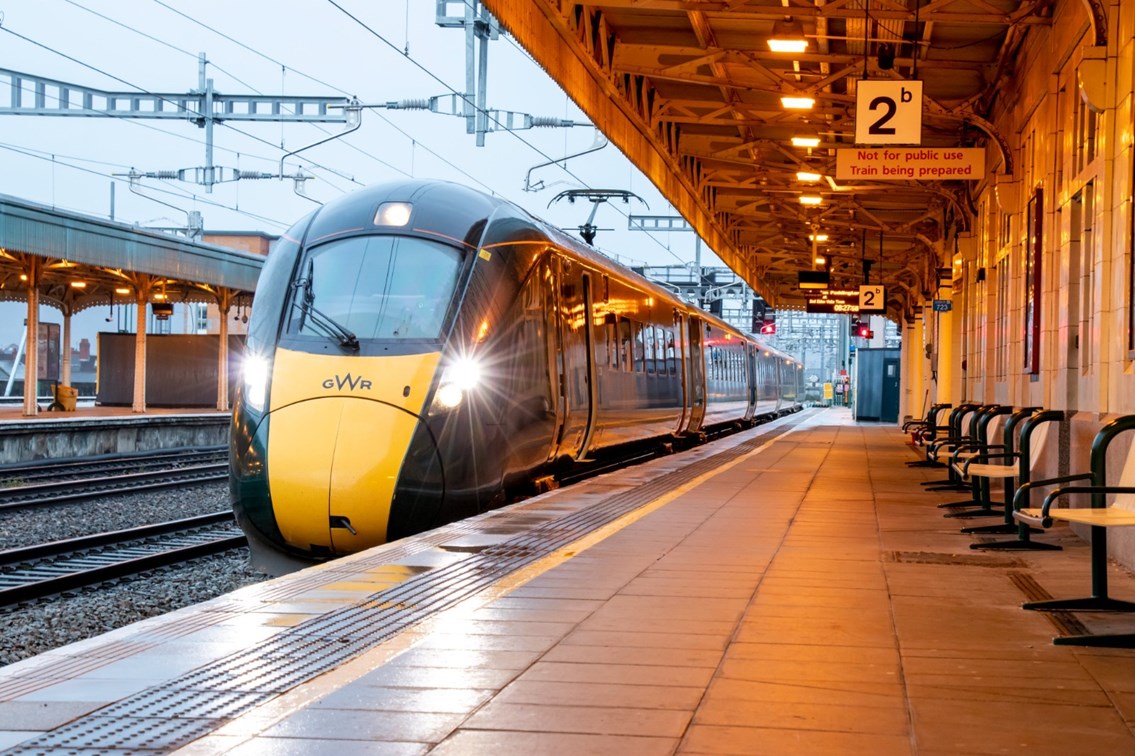Tuesday 7 Jan 2020
South Wales rail passengers benefit from first electric services between Cardiff and London
- Region & Route:
- Wales & Western: Wales & Borders
Rail passengers in South Wales are benefitting this week from electric services for the first-time following Network Rail’s successful completion of electrification of the railway between Cardiff Central and London Paddington.
Electrification between the two capital cities means thousands of extra seats, more frequent services and quicker journeys for passengers as they travel on GWR’s Intercity Express Trains.
Over the Christmas and New Year period, Network Rail engineers worked around the clock to switch on the electricity running through the overhead line equipment between St Brides, Newport and west of Cardiff Central station.
After successful testing, passengers are now benefitting from an average journey time saving of 14 minutes between South Wales and London and an additional 15,000 weekday seats between the two capital cities.
This major modernisation project has involved electrifying over 150 miles of track between Cardiff and London, including in Wales, installing over 4,200 masts and booms which hold the overhead wires in place, installing approximately 400 miles of wire and making changes to 49 different structures.
Electrification in South Wales follows electric services already being introduced in stages between London Paddington and the south west in recent years, providing thousands of extra seats, more services and quicker journeys on a greener railway for passengers in Bristol, Swindon, Reading, Newbury and now Newport and Cardiff.
Mark Langman, Network Rail’s Managing Director for Wales and Western said: “I am delighted that services can now run on electricity between Cardiff and London, linking the two capital cities for the very first time via an electric railway.
“This is the culmination of the largest modernisation project on the Great Western railway since it was built in Victorian times, which we have been working on over the last 10 years.
“Train performance has been very good since electric services have been operating, and together with the new timetable, passengers are already reaping the benefits of this huge modernisation.
“I would like to thank passengers and lineside neighbours for their patience over the past decade as we worked to deliver the transformation of this vital railway and am glad that they will benefit from these improvements for years to come.”
Notes to Editors
Image credit: Dai Lygad
Contact information
Passengers / community members
Network Rail national helpline
03457 11 41 41
Latest travel advice
Please visit National Rail Enquiries
Journalists
Sara Crombie
sara.crombie@networkrail.co.uk
About Network Rail
We own, operate and develop Britain's railway infrastructure; that's 20,000 miles of track, 30,000 bridges, tunnels and viaducts and the thousands of signals, level crossings and stations. We run 20 of the UK's largest stations while all the others, over 2,500, are run by the country's train operating companies.
Usually, there are almost five million journeys made in the UK and over 600 freight trains run on the network. People depend on Britain's railway for their daily commute, to visit friends and loved ones and to get them home safe every day. Our role is to deliver a safe and reliable railway, so we carefully manage and deliver thousands of projects every year that form part of the multi-billion pound Railway Upgrade Plan, to grow and expand the nation's railway network to respond to the tremendous growth and demand the railway has experienced - a doubling of passenger journeys over the past 20 years.
Follow us on Twitter: @networkrail
Visit our online newsroom: www.networkrailmediacentre.co.uk

